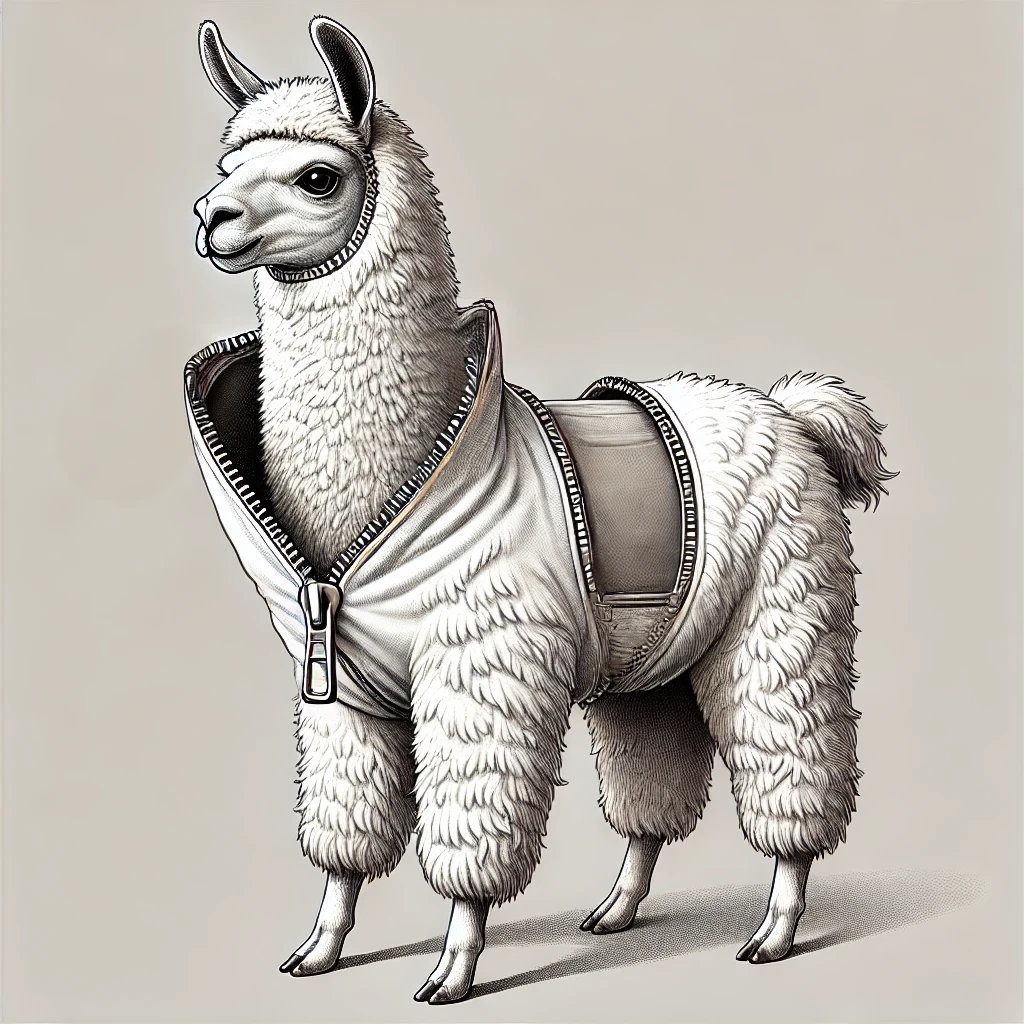- cross-posted to:
- Anticonsumption@europe.pub
- cross-posted to:
- Anticonsumption@europe.pub
You can just use white vinegar instead of fabric softener. It’s significantly cheaper, can be used for other non-laundry things, eliminates odors, and doesn’t gum up your washing machine with residue.
Is there anything vinegar can’t do?!? Between white and apple cider vinegar, I feel like they cover so many areas of cleaning and household stuff.
Vinegar ain’t basic, that’s for sure.
Further advice, don’t use a lot of it. You’ll see videos on youtube of people pouring like three cups of vinegar in their washing machine, don’t do that. You only need a splash of it. If you use too much, the acid will eat away at the rubber gaskets and shit
You definitely don’t need that much vinigar. That said most new washing machine are using a chemical resistant silicone or TPE instead of more traditional rubber compound. This eliminated the already miniscule risk of acid damaging the seals.
If you add 3 cups(about 700 mL) of standard 5% acetic acid bleach to 4 gallons of water(~ 15000 mL) you end up with a 0.2% acetic acid you will end up with a pH of something like 5.5 or about the pH of healthy skin. A lot of HE washers will use a 5 gallon initial wash so it’s likely to be even gentler than what I came up with in my rough napkin math guesstamate.
While I agree with the general sentiment, the vinegar won’t be released and diluted until later in the load, so it sits in its full 5% acetic acid glory for quite a while.
Most(maybe all) HE washers don’t have mechanical flaps that hold back the liquids, they sit in plastic cups that empty by an overflow or auto syphon system when water comes out of a tube located above that tub or cup. It’s a fancy plastic cup. Every plastic common to appliance manufacturing is resistant to 5% acetic acid. Chemical resistance of plastics chart
I just looked at the fabric softener cup in my washer, it’s HDPE(high density polyethylene). If you look at that chart you will see polyethylene is resistant to even concentrated acetic acid. The plastic bottle the vinigar comes in is made from a lower density polyethylene.
By the time the vinigar leaves the cup is already being diluted by the fill water causing it to overflow or start the auto syphon. It will not damage your washer, but even if it did, you can buy replacements for the entire soap tray for relatively little online. The same can be said for most other appliance parts with the notable exceptions being large motors and some brands control boards. There are tons of write ups, tutorials and videos on how to fix broken appliances and replace parts.
Yes, I was just being pedantic. Sorry to have triggered such an involved response, but thanks for all the information! From what I understand this is more of a problem in dishwashers, if you want to use it as rinse aid.
No worries, I am a fan of pedantry. The amount of involved in the response was just me getting mentally stuck in a washing machine hole.
I’m not sold on that homemade detergent. Soap tends to leave insoluble residue, especially when you have hard water. There is a reason why almost everything uses synthetic detergents (though it might also be because those are cheap).
Yeah, I’ve never understood the point in using a different soap as the base of a different soap. I make my own laundry soap out of basic shit I get from Walmart, and it works great.
Is it actually cheaper than buying dry detergent for cheap?
Good question, but I’ll admit I’ve not actually run the exact figures. I’m actually doing this for health reasons rather than monetary, since one of my partners is allergic tio life.
But to your question,I might have spent the cost of 1.5 large boxes of laundry detergent ($30) for the 4 items that go into it (Baking soda,Epson salt,washing soda,sea salt), but given the fact I can buy in bulk, I wouldn’t be surprised if it ends up being cheaper. In the last 6mo I’ve made the laundry soap twice and haven’t put a huge dent in my ingredient stock. I wouldn’t be surprised to find I get more than 200 washes out of the base ingredients, which would definitely be more economical than the premade stuff.
‘Most millennials aren’t buying enough of our shit and that’s a HUGE PROBLEM that all of you definitely care about!’
That’s some pretty useful advice in the comments tho. But also I’m 52 years old and have literally never used fabric softener in my life and have no idea what it’s supposed to be for other than making companies like Proctor & Gamble even more money.
Also, another handy tip: ‘lather, rinse, repeat’ is bullshit, unless you have really thick or really oily hair and don’t wash regularly, you don’t need to wash it twice, the shampoo company just wants you to buy more. Same with fill marks in a washing machine, unless you’re doing a huge load there’s no reason to fill it all the way up.
I gotta wash mine twice(when i do wash it), but that’s because of the extra oils I put in my hair. The first wash absorbs so much of the oil it won’t really even lather.
Obvious solution seems to be to put less oil in your hair? shrug
Then it doesn’t look right. Obvious solution is to just wash my hair twice. So obvious it’s what I do and it works great.
I’ve literally never put oil in my hair in my life (tho now I say that I dunno if shampoo/conditioner has oil in it. Probably.) It’s looked fine this whole time.
I’ve probably had pretty long hair for longer than you’ve been alive. If you have long hair and wanting it to look not crazy without tying it up, you’re putting something in it. Whether it’s leave in conditioner, or fiber or pomade or gel or hairspray or some type of oil or you manage to skip all that by straightening it all the time; you’re putting something in it or doing something to it. Very few people have an exception to this. Namely people who have very straight, limp hair.
I’m in my 50s so color me skeptical on that count, but fair enough. ;) But yeah, I’ve never been able to grow my hair out and keep it that way even though I do have very straight, limp hair just because it was always a pain to wash and care for and I just didn’t care enough.
and don’t wash regularly
Even washing hair regularly is a scam. If you wash once a week your hair will be fine. It’ll look like shit for a few weeks until your scalp gets the message that you aren’t stripping away all the natural oils still and that it can cut back on oil production but afterwards your hair will be healthier.
I’m sorry to have to say, but the idea of “hair training” is a myth.
The oil glands (which are known as sebaceous glands, and produce an oil called “sebum”) are controlled by genetics, hormones, and stress. Sebaceous glands don’t have any sort of “sensor” to tell them when to produce more/less oil, so washing or not washing won’t make a difference.
Thank you. I have extra oily hair so if I skip washing it even a single day it starts to look like I’m using pomade, and whenever I tell people this they always insist I should just wash it once a week and my head will “adjust.”
I am the exact same, friend. My hair becomes a big oil slick after only a day without washing and it’s really obvious. Which is part of why this particular myth bothers me so much.
First, as teens, we had uninformed randos without oily skin telling us to heal our acne problems by putting nonsense like toothpaste and silly putty on our faces. Now, those same uninformed, non-oily randos tell us that our greasy hair can be solved by not washing it.
But my dermatologist was right about the acne care they recommended, I’m inclined to trust them about my scalp care too.
Yep, I had really bad acne when I was younger and the only thing that worked was isotretinoin, which is rough. My lips cracked and bled while I was taking that but when I was finished the acne was gone.
They made me pledge not to get pregnant while taking it despite the fact that I don’t have a uterus, lol.
I knew /r/nopoo was a lie!
This is true, but greasy hair looks greasy and makes your pillow smell bad which impacts your ability to fall asleep.
Like sure, it’s not natural to wash your hair every 2/3 days, but imo it’s worth it
No, your hair stops becoming greasy. That’s the point. It gets that way because you’re stripping the oils, so it produces more to replinish it. If you stop then your scalp eventually adjusts and stops producing much oil.
People think greasy hair is just what happens, but no. It’s what happens when you’ve been stripping your hair dry for years and your scalp is trying it’s best to fix the problems you’re causing. Stop causing problems and it’ll normalize.
I wash with water frequently, but when I really need a good clean I wash with conditioner. The oils bind and are removed but your hair will be refreshed. I rarely wash with shampoo, for years at this point, and my hair isn’t greasy. It just feels healthy.
It’s what happens when you’ve been stripping your hair dry for years and your scalp is trying it’s best to fix the problems you’re causing. Stop causing problems and it’ll normalize.
Please do explain how an exocrine gland on the scalp is supposed to know how much oil is on a strand of dead hair cells, located inches away from the skin?
It’s worse. Fabric softener is composed of an anti static oil. When you run it in the laundry, it coats all of your clothes with a very thin layer of oil.
Which is why towels dried with fabric softener and dryer sheets don’t absorb water anywhere near as well as plain towels dried without it!!
My mom complained to me for years that I wasn’t “doing it right” by not using fabric softener. But her towels are useless compared to mine! She continues to spends $100/ year on fabric softener while on social security. Over the year she has spent thousands and thousands of $$$. 🤦♀️
Not only that, some people (including myself) are sensitive to the oils used. Having underwear that actively makes you itchy sucks. I switched to wool dryer balls and never looked back
deleted by creator
If there was a Lemmy community for fighting or complaining the use of useless fragrance, I would join it right now.
Let’s make !nofragrance real !I did an allergy patch test a few years back. Besides the allergies, I came back as sensitive to fragrance. I try to stick to products on that safe list. But it’s very difficult.
Yeah I’m not putting all that effort and potentially ruining my washing machine to save me a few cents per wash. That seems ridiculous.
You don’t even have to buy the fancy, expensive, in a pod detergent or anything, considering they always contain the same stuff that comes in a box/bottle. Just buy whatever’s cheap.
Yea, making your own laundry detergent from grated soap and borax seems like something people with money do to convince themselves they’re frugal. When in reality, there is no way in hell you’re making a commodity cheaper than GreatValue ™
Yeah, the cheap standard powder detergent would probably be less expensive. The volume you’d need to make to beat it is huge. Like, maybe five years’ worth.
I am also laughing at making washing powder in the oven to save money. The amount you’d spend on electricity would put you in the red, unless you live in a petrostate with free electricity or something.
Not just the effort, but by the time you buy all those ingredients, you’re probably paying more than you would for normal laundry detergent.
And if you use Dr. Bronner’s bar soap as recommended, you’ll be paying out the ass.
Not to mention the gas to go to the three separate stores you probably need to buy that shit from.
Eh, all of that stores really well, so buy in bulk.
Hello electricians and safety nerds. Fabric softener removes the fire rating on fire rated clothing protecting you from arc flash hazards.
I want to know more.
This is pure conjecture, but my guess is that the film of fabric softener left on the clothes would interfere with the fire retardant fibers/may be flammable itself.
It’s worth noting that cat owners(at least, never had anything buts cats) should avoid certain essential oils, As our furry pals’ little organs aren’t equipped to process them, and they can easily be deadly!
@pseudo@jlai.lu, saw you mention essential oils too, just a PSA.
Gen X here, I only use unscented dryer sheets because if I don’t I will get shocked a lot. My apartment is great because the humidity is super low in the winter, but clothing hurts. Humidifier doesn’t work because if I don’t use distilled water everything gets a rust color on it. Also I’d be going through a gallon of distilled water a day. I can’t afford that, but I sure as heck can afford a big box of unscented dryer sheets that solves my problem.
I’m not convinced about the cost. A kilogram of borax seems to run about $10CAD. 2 cups, at 1.7g/CC, would be about 850g, so $7 just for the Borax. Unless there’s a much cheaper place to get it…
A ~5L jug of Tide costs $31, or about $6/L. If they have approximately equivalent cleaning power per volume, Tide wins.
Most of that tide jug is water.
Yeah, which is why I added the note about cleaning power per unit volume. But it’d have to be a fair bit more powerful to make the effort worth it, I think.
We use maybe 50ml of Tide (so that’d be probably 100 loads) when doing our laundry, so if that’s equivalent to like one tablespoon of the Borax mix, I could see it saving me $20 or so overall, if it’s three times stronger.
So it’d come down to how much time I spend shopping and combining the mixture vs just buying it.
Mind, that’s just the borax. Bar soap and baking soda are cheap but not free.
(edit: and before someone jumps on me about “baking soda”, I was thinking of it in terms of decomposing it into carbonate in the oven. I haven’t priced out washing soda)
I don’t know about needing to make your own detergent. But using dry detergent would be a drastic improvement in cost compared to what most people do because if you’re buying liquid detergent, most of what you’re buying is water.
deleted by creator
Freedom units were imported from Britan.
And then bastardised.
Chad UK/Irish Imperial pint: 568ml
Virgin US Customary Unit pint: 473ml
239.59 ml
Edit: switched out the original number for the correct number
deleted by creator
I just realized 59.15 ml is 1/4 of a cup while 1 cup is 239.59 ml
Annoyingly, the US has two different “cups”
US legal units puts it as 240ml
US Customary Units puts it at 236.59ml
Then there’s Imperial cups, which is 284.13ml
Then there’s the metric cup at 250ml
It happened a lot in our nation’s history that folks would have relatively simple kitchens not equipped with scales or even a set of measuring cups, so eating vessels and utensils would be used. A lot of staple American baked goods like biscuits are really more about feeling the consistency of the dough than sticking to a recipe anyway, so laboratory precision is not necessary.
At some point the cup got codified as half a pint, or 8 fluid ounces, or slightly under 0.125L. A tablespoon is 1/2 of a fluid ounce and thus 1/16th of a cup. A teaspoon is 1/3 of a tablespoon.
It works out that tea- and tablespoons are ~ 4.928 and 14.786 mL respectively. The medicine industry, which actually does everything in metric and has for decades now, often writes dosing instructions in metric tea- or tablespoons of 5mL and 15mL respectively. For example, my bottle of Listerine mouthwash says in its instructions “swish 10mL (2 teapoonfuls) between your teeth for 30 seconds…”
Believe it or not we also know how long an inch is, too.
deleted by creator
It boggles your mind that the units people were actually using became standardized?
deleted by creator
The amount measured by a typical tea or coffee cup is approximately 1/2 US Pint, so when it comes time to codify it that’s a reasonable place to put it.
Anything else you wish to artificially complicate?
Freedom units should be replaced with something like racist units or genocide units or orange units
The freedom was always sarcastic
deleted by creator
So the metric units? Those were used by racists and genocidal tyrants throughout history.
deleted by creator
I didn’t say it was. Just that has been quite popular with those types of defective people over the history of the use of the metric system.
The Imperial system has it’s own special though.
deleted by creator
I tend to use moon landing units.
Didn’t the Apollo missions use metric, though?
In liberté units.
My favorite is the Tide Free and Clear commercial where the kid goes “look dad, it’s just as clean but without any of the chemicals that harm me!” They’re literally admitting their core product contains harmful chemicals yet people are still buying it!
Borax gives me rashes, but I’ve used laundry bar soap or just the super sensitive skin liquid stuff. I use vinegar instead of name brand fabric softener because it’s cheaper and the other stuff gives me a rash. Nearly all of the store bought laundry stuff gives me rashes.
Btw, washing your shower curtain with vinegar prevents it from getting moldy. And no, it doesn’t smell.
It does smell, but only until it dries
Washing Soda
No. Just no. Sodium carbonate, you americans!
Also called soda ash.
Washing soda is sodium carbonate, baking soda is sodium bicarbonate
Washing Soda
No. Just no. Sodium carbonate, you americans!
Washing soda is sodium carbonate, baking soda is sodium bicarbonate
So exactly what they said?
All ot does is make the fabric soft? Are yall wearing potatoes sacks?
Having softener does not soften fabric. It’s basically just liquid perfume for your clothes. It also shortens the lifespan of your clothes by destroying them.
It does in fact soften fabric. I use it for blankets to keep them in that nice smooth state. Yes it increases ware but the enjoyment of the blankets is enhanced dramatically imo.
I have a bottle of lavender fabric softener I’ve had for probably 7 years. I use it on blankets and sometimes sheets because I like the smell of this one. Everything else I use is unscented.
I wash the blankets like once or twice a year unless a cat barfs on it. Then it gets washed again.
A couple times a year I have static problems. I have a box of dryer sheets that are also at least 7 years old. I reuse them too for multiple loads. Don’t use them for months, get zapped multiple times, throw in dryer sheet, run on low/no heat for 10 minutes, less static electrocution and can fold laundry with less cursing.
Also if you want to wear something straight out of the dryer that is so full of static electricity it’s sticking to you and turning you into a wizard, zapping everything you touch… a light mist of water helps. Not a drenching. It should dry fast. Also works on hair.
Im a big fan of wool dryer balls. They seem to help a lot with static and making sure that large single items actually get dry.





















